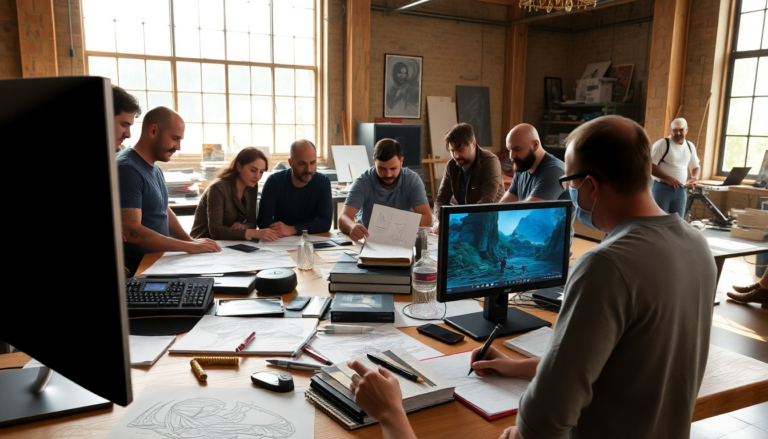Argomenti trattati
Imagine being part of a team that, after achieving massive success, is suddenly thrust into a whirlwind of expectations. That’s precisely what happened with Santa Monica Studio after the groundbreaking reboot of God of War in 2018. The pressure was on, and the challenge was monumental: create a sequel that was not just a follow-up but a grander, more elaborate experience. Ariel Lawrence, the game director, shares insights into this demanding journey, revealing a mix of exhilaration and sheer chaos.
The weight of expectations
The success of God of War was a double-edged sword. On one hand, it validated the studio’s creative vision; on the other, it set the bar incredibly high. Lawrence recalled the moment Sony executives approached the team with their ambitious demands. “They came to us and said, ‘You’re going to make the second one. You’ll do it in half the time, and it has to be twice as long, with more bosses and enemies,'” she said. It was a daunting request, but the team’s response? A determined, “Sure, we can do that.”
But let’s be real, the reality was a bit different. The sheer scale of Ragnarök was mind-boggling. With an estimated 100 hours of content, it’s no surprise that the team found themselves in an intense development cycle. I remember hearing about the crunch culture in game development, and it makes you wonder—how far is too far? It’s a conversation that’s been buzzing for years, especially in the context of beloved franchises.
The process of creation
The creative process behind Ragnarök was a mixture of inspiration and hard work. Lawrence described the years leading up to the game’s release as a blur of excitement and exhaustion. “I don’t recall sleeping much during those years. It was pure chaos, but in the best way possible,” she reflected. The studio had to harness that energy—turning pressure into productivity—while also ensuring that the game remained true to its roots.
As many know, every game comes with its share of challenges, and Ragnarök was no exception. The team had to innovate while facing the ever-present risk of burnout. It’s a delicate balance that many in the industry have come to recognize. Yet, despite the hurdles, the passion for the project drove them forward. The thrilling narrative, the nuanced characters, and the intricate world-building all came together to create a gaming experience that players would remember.
The final product
When the dust settled and Ragnarök was finally released, the reception was overwhelmingly positive. Fans were treated to a sequel that not only expanded on the original but also pushed the boundaries of storytelling in games. Lawrence recalls the moment the reviews started pouring in: “We thought, ‘Wow! People really love it!’” It was a gratifying moment for everyone involved, validating all the hard work and late nights.
But what about the crunch? I can’t help but think about the toll it takes on developers. Sure, the end product was a triumph, but at what cost? The industry is still grappling with these questions, and it’s crucial to keep the well-being of creators in mind as we celebrate their achievements. After all, behind every great game is a team of dedicated individuals who deserve recognition and respect.
The legacy of God of War
Looking back, it’s fascinating to see how far the God of War franchise has come. From its origins to becoming a cornerstone of modern gaming, it’s a testament to the power of storytelling and design. The series has not only captivated audiences but has also influenced countless other titles in the industry. With both God of War entries now available on PlayStation 4, PlayStation 5, and PC, new players continue to discover this epic saga, ensuring its legacy lives on.
As I think about the future, I can’t help but feel excitement for what’s next. Will Santa Monica Studio continue to innovate? How will they tackle the evolving landscape of gaming? Only time will tell. But one thing is certain: the journey of God of War Ragnarök is one for the history books, showcasing the triumphs and trials of game development in a way that resonates with both fans and creators alike.

